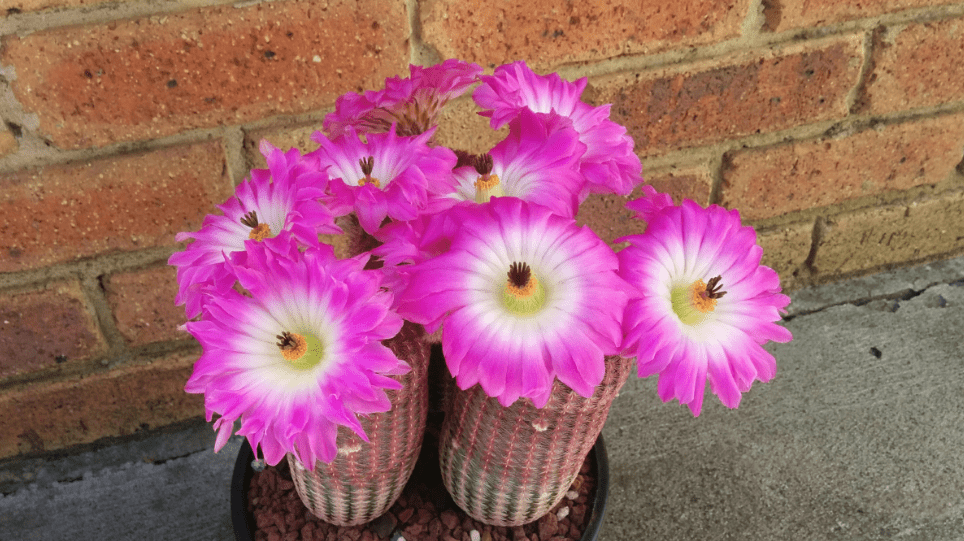
Rainbow Cactus: Stunning Desert Blooms for Your Home
Rainbow cactus are a stunning addition to any home, and in this post, we’ll explore everything you need to know about caring for and displaying these beautiful desert blooms. Whether you’re a seasoned plant enthusiast or a beginner, we’ll provide tips and tricks to help you bring a touch of the desert into your home. From proper care and maintenance to creative display ideas, this post has everything you need to know about rainbow cactus.
Table of Contents
ToggleUnderstanding Rainbow Cactus
A. Botanical name and classification
Rainbow cactus, also known as Echinocereus rigidissimus, belong to the Cactaceae family and are native to the southwestern United States and northern Mexico.
B. Description of the plant
Rainbow cactus are characterized by their stunning, colorful blooms and cylindrical, ribbed stems. The flowers can range in color from pink and purple to orange and yellow, creating a vibrant display when in bloom. The stems are covered in clusters of spines, giving the plant a unique and striking appearance.
Selecting the Right Rainbow Cactus Variety
A. Popular rainbow cactus varieties
- Echinocereus rigidissimus (Arizona Rainbow Cactus)
- Echinocereus pectinatus (Rainbow Hedgehog Cactus)
- Echinocereus engelmannii (Engelmann’s Hedgehog Cactus)
These popular varieties of rainbow cactus are known for their stunning and vibrant colors, making them a popular choice for cactus enthusiasts. Each variety has its own unique characteristics and color variations, so it’s important to consider the specific qualities you’re looking for when selecting the right rainbow cactus variety for your collection.
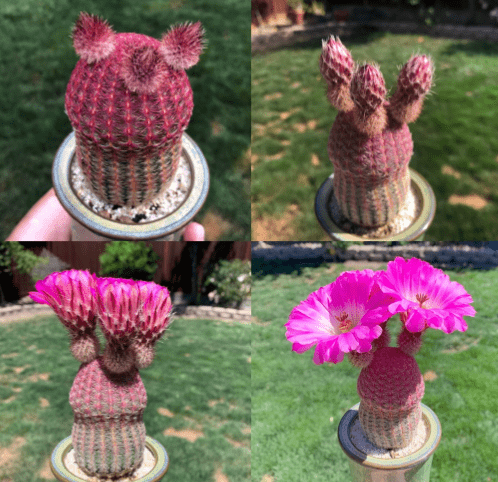
B. Factors to consider when choosing a variety
When choosing a rainbow cactus variety, it’s important to consider factors such as the size of the cactus, its growth habits, and the specific colors and patterns you prefer. Some varieties may be more compact and suitable for smaller spaces, while others may have more sprawling growth habits. Additionally, consider the climate and sunlight requirements of each variety to ensure it will thrive in your specific growing conditions. It’s also a good idea to research the care requirements for each variety to make sure you can provide the necessary maintenance for your chosen rainbow cactus.
Preparing for Planting
A. Choosing the right location
When preparing to plant a rainbow cactus, it’s important to choose the right location that meets the specific sunlight and climate requirements of the variety you’ve selected. Cacti generally prefer well-drained soil and plenty of sunlight, so be sure to choose a spot that receives adequate sunlight throughout the day. Additionally, consider the temperature and humidity levels in your area and choose a location that will provide the right growing conditions for your cactus. It’s also important to consider the size of the cactus and its growth habits when choosing a location, as some varieties may be more suitable for indoor or outdoor growing. By carefully selecting the right location for your rainbow cactus, you can help ensure its long-term health and vitality.
B. Preparing the soil
When preparing the soil for planting your rainbow cactus, it’s important to use a well-draining potting mix that will allow excess water to flow through and prevent root rot. You can also add some sand or perlite to the soil to improve drainage. Additionally, consider adding some compost or fertilizer to provide essential nutrients for your cactus. Mix the soil thoroughly and ensure it is evenly moist before planting your cactus. By preparing the soil properly, you can create a healthy environment for your rainbow cactus to thrive.
Planting Rainbow Cactus
A. Starting from seeds vs. purchasing young plants
When planting a rainbow cactus, you have the option of starting from seeds or purchasing young plants. Starting from seeds can be a more cost-effective option, but it requires more time and patience as it can take several years for the cactus to reach maturity. On the other hand, purchasing young plants allows you to skip the initial growth stages and enjoy a fully developed cactus more quickly. Whichever option you choose, be sure to plant your cactus in a well-draining soil mix and provide it with plenty of sunlight and minimal water to ensure healthy growth.
B. Planting techniques
When planting a rainbow cactus, it’s important to use a well-draining soil mix to prevent waterlogging, which can rot the roots. You can also add some sand or perlite to the soil to improve drainage. When planting, make sure to position the cactus in a sunny spot as it requires plenty of sunlight to thrive. Additionally, be cautious with watering, as rainbow cacti are drought-tolerant and only need minimal water. Overwatering can lead to root rot, so it’s best to water sparingly. Lastly, be careful when handling the cactus as they have sharp spines that can cause injury. It’s recommended to use gloves or a towel when planting to avoid any accidents.
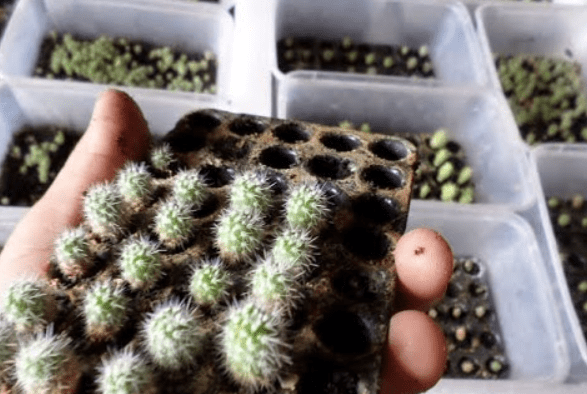
Care and Maintenance
A. Watering requirements
Rainbow cacti are drought-tolerant and only need minimal water. It’s best to water sparingly to avoid overwatering, which can lead to root rot. Be cautious with watering and only water when the soil is completely dry.
B. Fertilizing rainbow cactus
Fertilize rainbow cactus sparingly, using a balanced liquid fertilizer diluted to half strength. Apply the fertilizer during the growing season, from spring to summer, and avoid fertilizing in the winter months when the cactus is dormant. Over-fertilizing can cause damage to the roots, so it’s important to follow the recommended guidelines for fertilization.
C. Pruning and grooming
Pruning and grooming your rainbow cactus is important for maintaining its health and appearance. Use clean, sharp scissors or pruning shears to carefully remove any dead or damaged stems or branches. You can also gently remove any debris or dust from the cactus with a soft brush or cloth. It’s best to avoid excessive pruning, as rainbow cacti have slow growth and can be sensitive to excessive cutting. Regular grooming will help keep your cactus looking its best and promote healthy growth.
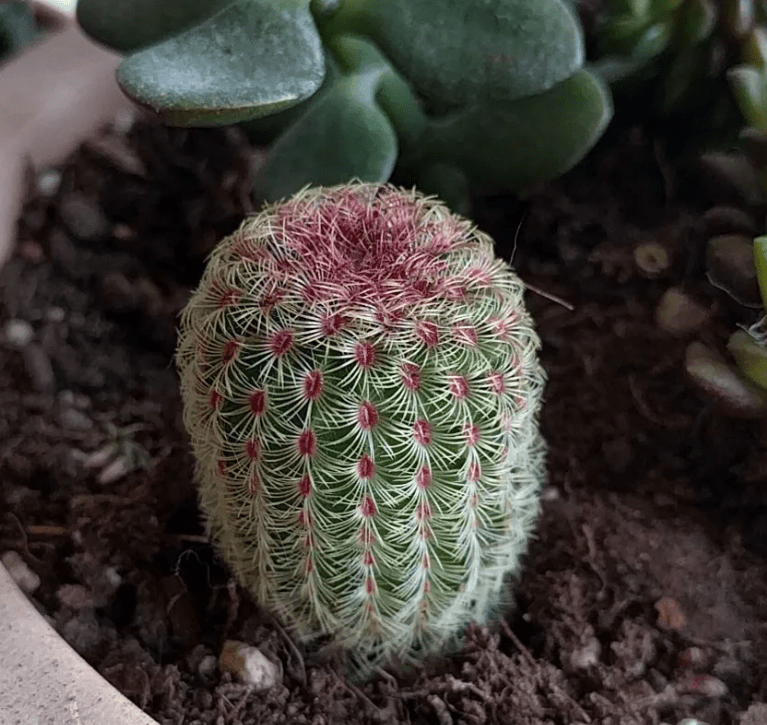
Managing Pests and Diseases
A. Common pests affecting rainbow cactus
Common pests that can affect rainbow cacti include spider mites, mealybugs, and scale insects. Look out for signs of infestation such as webbing, white cottony patches, or small, raised bumps on the cactus. If you notice any signs of pests, it’s important to take action quickly to prevent the infestation from spreading. You can use a gentle insecticidal soap or neem oil to treat the affected areas and help eliminate the pests. It’s also important to regularly inspect your cactus for any signs of disease, such as rot or fungal infections, and take appropriate measures to address any issues that arise. Regular maintenance and attentive care will help keep your rainbow cactus healthy and pest-free.
B. Common diseases
Common diseases that can affect rainbow cacti include root rot, stem rot, and fungal infections. It’s important to monitor your cactus for any signs of discoloration, soft spots, or unusual growths, as these may indicate a disease. If you notice any signs of disease, it’s important to take action quickly to prevent it from spreading and potentially causing harm to the cactus. You can treat diseases by improving the cactus’s growing conditions, such as providing proper drainage and avoiding overwatering. In severe cases, you may need to use a fungicidal treatment to help eliminate the infection. Regular monitoring and proper care can help prevent diseases from affecting your rainbow cactus.
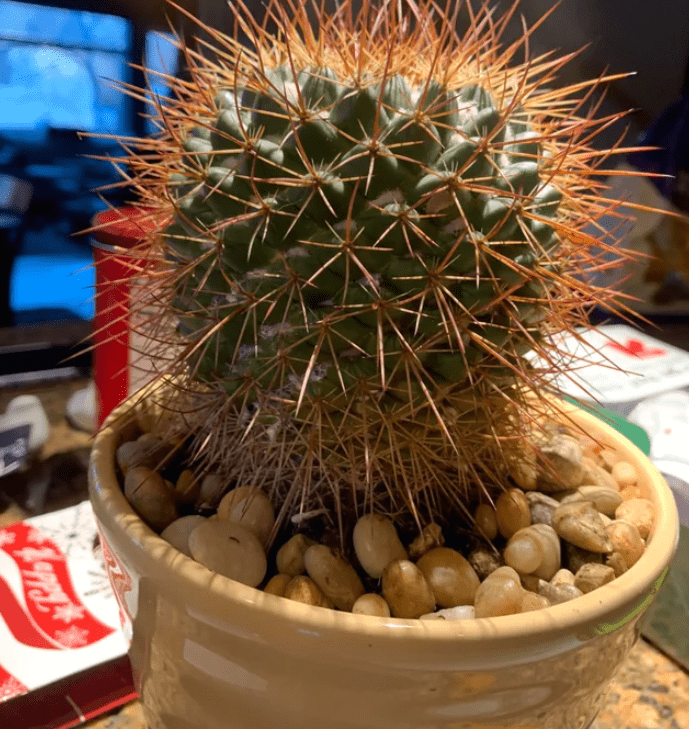
C. Organic and chemical control methods
Organic and chemical control methods may also be used to prevent and treat common diseases in rainbow cacti. This can include using organic fungicides or pesticides to control fungal infections and insect pests. It’s important to follow the instructions on these products carefully to ensure they are applied safely and effectively. Additionally, maintaining good hygiene practices, such as cleaning and sterilizing pots and tools, can help prevent the spread of diseases. Overall, being proactive and attentive to the health of your rainbow cactus can help keep it disease-free and thriving.
Promoting Blooming
A. Factors influencing blooming
Factors influencing blooming in rainbow cacti include proper light, temperature, and water conditions. Rainbow cacti thrive in bright, indirect sunlight and need temperatures between 65-85 degrees Fahrenheit to encourage blooming. Additionally, they require well-draining soil and should be watered sparingly, as overwatering can inhibit blooming. Fertilizing with a balanced, water-soluble fertilizer during the growing season can also promote blooming. It’s important to provide these optimal conditions to encourage healthy and vibrant blooms on your rainbow cactus.
B. Tips for maximizing blooms
To maximize blooms on your rainbow cactus, it’s important to provide the proper care and conditions. This includes placing the cactus in a location with bright, indirect sunlight and maintaining temperatures between 65-85 degrees Fahrenheit. Additionally, be sure to use well-draining soil and water sparingly, as overwatering can inhibit blooming. Fertilizing with a balanced, water-soluble fertilizer during the growing season can also help promote blooms. By following these tips, you can encourage healthy and vibrant blooms on your rainbow cactus.
Displaying and Decorating with Rainbow Cactus
A. Indoor display ideas
When it comes to displaying your rainbow cactus indoors, there are a variety of creative ways to showcase its beauty. Consider placing it in a decorative pot or planter that complements its vibrant colors, or arranging multiple cacti together for a visually appealing display. You can also create a mini succulent garden by incorporating other small succulent plants and decorative rocks or sand. Additionally, hanging or wall-mounted planters can add a unique touch to your indoor decor. Get creative and have fun with different display ideas to highlight the beauty of your rainbow cactus.
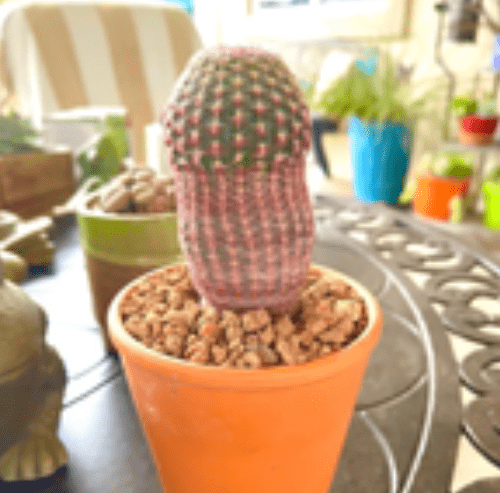
B. Outdoor landscaping ideas
When it comes to landscaping with rainbow cactus outdoors, there are several ideas to consider. You can plant them in a desert-themed garden alongside other succulents and cacti, or incorporate them into a rock garden for added texture and color. Additionally, using them as a focal point in a container garden or as part of a dry, low-maintenance landscape design can create visual interest and add pops of color. Consider mixing and matching different varieties of cacti for a diverse and visually appealing outdoor display. Just be sure to place them in well-draining soil and provide plenty of sunlight to ensure they thrive in their outdoor environment.
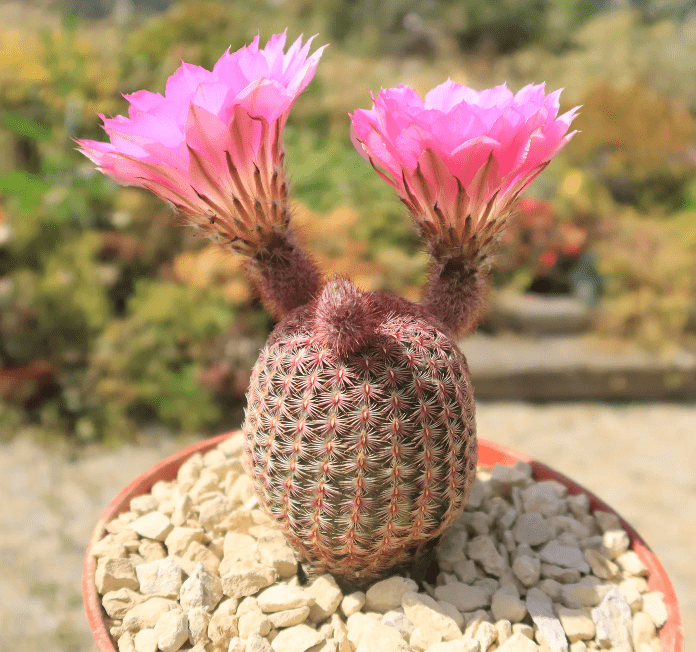
Propagation Methods
A. Methods of propagating rainbow cactus
Rainbow cactus can be propagated through several methods. One common method is through seeds, which can be collected from the fruit and planted in well-draining soil. Another method is through offsets, which are small offshoots that can be carefully removed from the parent plant and planted in their own pots. Additionally, rainbow cactus can be propagated through cuttings, where a small piece of the plant is cut off and allowed to callus before being planted in soil. Whichever method you choose, be sure to provide the proper growing conditions and care to ensure successful propagation.
B. Step-by-step guide to propagation
1. Seed propagation:
– Collect seeds from the fruit of the rainbow cactus.
– Plant the seeds in well-draining soil and keep them moist but not waterlogged.
– Provide warmth and light for germination to occur.
2. Offset propagation:
– Carefully remove small offshoots (offsets) from the parent plant.
– Allow the offsets to dry and callus for a few days.
– Plant the offsets in their own pots with well-draining soil and provide the proper growing conditions.
3. Cutting propagation:
– Take a small piece of the rainbow cactus plant and allow it to dry and callus for a few days.
– Plant the cutting in well-draining soil and provide the proper care to encourage root development.
Remember to provide the proper growing conditions for the newly propagated rainbow cactus, such as bright light, well-draining soil, and appropriate watering. With the right care, your propagated rainbow cactus should thrive and grow into healthy new plants.
Troubleshooting Common Problems
A. Identifying and solving common issues
Identifying and solving common issues such as overwatering, underwatering, or poor soil drainage is essential for the successful propagation of rainbow cactus. Keep an eye on the moisture levels of the soil, and adjust your watering schedule accordingly. Additionally, ensure that the cactus is receiving adequate sunlight and is planted in well-draining soil to prevent root rot. If you notice any signs of disease or pest infestations, take prompt action to address the issue and protect the health of your newly propagated cactus. Regular monitoring and care will help your rainbow cactus thrive and grow into beautiful new plants.
B. Preventative measures
Taking preventative measures can help to ensure the health and vitality of your rainbow cactus. This includes proper watering techniques, using well-draining soil, and providing adequate sunlight. Regularly inspecting your plants for any signs of disease or pest infestations and taking proactive steps to address these issues can also help to prevent common problems from occurring. Maintaining a healthy and balanced environment for your rainbow cactus will contribute to their successful propagation and growth.
In conclusion, rainbow cacti are a stunning addition to any home and can bring a pop of color and natural beauty to your space. When caring for these unique plants, it’s important to provide them with plenty of sunlight, well-draining soil, and minimal water. Displaying them in a bright, sunny spot in your home will ensure that they thrive and continue to bring joy to your living space. Whether you’re a seasoned plant enthusiast or a beginner, adding a rainbow cactus to your collection is sure to be a beautiful and rewarding experience.
Frequently Asked Questions (FAQs)
A rainbow cactus is a type of cactus that produces vibrant and colorful flowers, adding a stunning pop of color to your home or garden.
Rainbow cacti require well-draining soil, plenty of sunlight, and minimal watering. It’s important to avoid overwatering and to protect them from extreme temperatures.
Yes, rainbow cacti can thrive indoors as long as they receive plenty of sunlight and proper care.
Rainbow cacti typically bloom once a year, usually in the spring or summer, and their flowers can last for several weeks.
Yes, rainbow cacti are relatively low-maintenance and can be a great option for those who are new to caring for plants.
Yes, rainbow cacti can be propagated through seeds or by separating offsets from the main plant.
Rainbow cacti prefer warm and dry environments, so it’s important to provide them with the right conditions to thrive.
Rainbow cacti can often be found at nurseries, garden centers, or online plant retailers. Make sure to choose a reputable source to ensure the health and quality of the plant.
